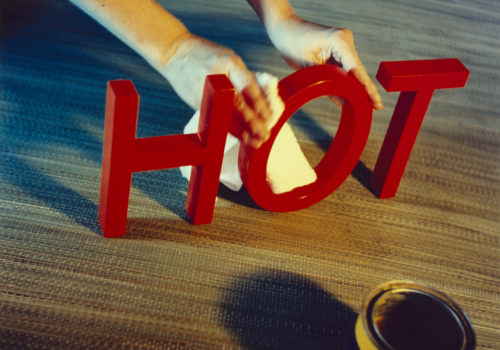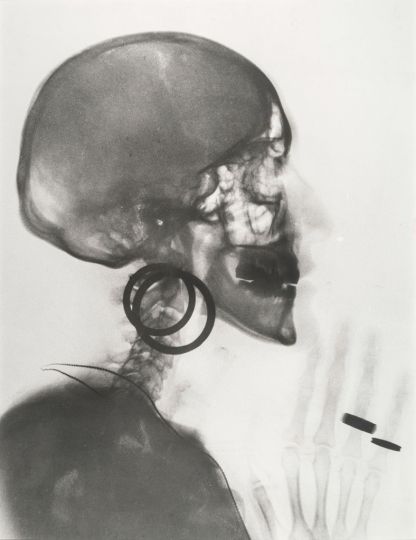Beginning in the 1960s, Dutch conceptual artist Jan Dibbets took on photography, which he manipulated to transcend its very essence and question the mechanics of sight. He has returned to the Musée d’Art Moderne de la Ville de Paris (ARC), invited by Fabrice Hergott, to compose his photography sequence preferring the intuitive and formal connections to historical contemplation, in a liberally subjective approach. Pandora’s box (title of the exhibition), opened by Nicéphore Niepce in 1824,it has consistently been explored by other scientific visionaries placing the mechanical image at the heart of many issues. From their inventions stem the most current experiments linked to photography, meant to continuously push its limits. It is this radicality by which Jan Dibbets was inspired, using the reproduction of Ingres’ Comtesse d’Haussonville as the process’ starting point. The portrait was painted at the time of photography’s debut; Ingres had daguerreotypes rather than etchings taken of his paintings as they were, according to him, more faithful to the original. That, therefore, raises the question of realism. Photography allowed to record nature’s phenomenons (Talbot and Anna Atkins, and later Karl Blossfeldt) and the infinitely large and infinitely small (Andreas Ritter von Ettingshausen and Auguste Adolphe Bertsch). It rapidly became part of scientific advancements (Eadweard Muybridge’s decomposition of motion held great acclaim through several series , next came Marey and Dement, and behavioral psychology, by Duchenne de Boulogne, and even the discovery of the x-ray by Wilhelm C. Röntgen). Images which were going to open up a whole new field of inspiration for avant-garde artists from the beginning of the Twentieth Century such as Man Ray, Rodtchenko, Bérénice Abbott, Stieglitz or even Alvin Langdon Coburn and Anton Giulio Bragaglia. These were lesser known artists before a new wave of technology came from the medium, as, for example, the Kodak phenomenon and the wave of family albums or the breakthrough of the digital, undoubtably the biggest advancement. Jan Dibbets highlights that the evolution of photography differentiates itself from painting, less dependent on these successful technical upheavals.
The last part of the process explores photography’s trial period during the digital era in a voluntary approach narrowed to contemporary artists who require an extension of a technical domaine through the notion of “Photographic Objects”, as perceived by Theorist Markus Kramer, this section’s scientific advisor. Whether it be Thomas Ruff, Seth Price, Kelley Walker, Wade Guyton or Spiros Hadjidjanos, they all participate in this extreme hybridization of genres, these changes from one register to another around the questions of original, reproduction and appropriation, all in the medium’s logic of reproducibility.
Throughout the exhibition, Jan Dibbets firmly places himself on the side of duplication strengthening the reconciliation of similar works, positive and negative, inviting us to think about photography’s usage value in regards to its exchange value. Questions go well beyond the original challenge and engage a real reflection on the “how” of photography in relation to the thoughts of philosopher Vilém Flusser, this “apparatus” or double-edged device. According to the artist and curator, photography, which has been very much misunderstood, became the equal of painting and other creative fields. Its future, provided that one knows how to get away from redundancy and superficiality, will only become more radiant . And as in the myth, once Pandora’s box is open, it is impossible to control the flow…
EXHIBITION
La boîte de Pandore (Pandora’s box)
Another Photography by Jan Dibbets
Until July 17th, 2016
Musée d’art moderne de la Ville de Paris
11 Avenue du Président Wilson
75116 Paris
France
http://www.mam.paris.fr

















